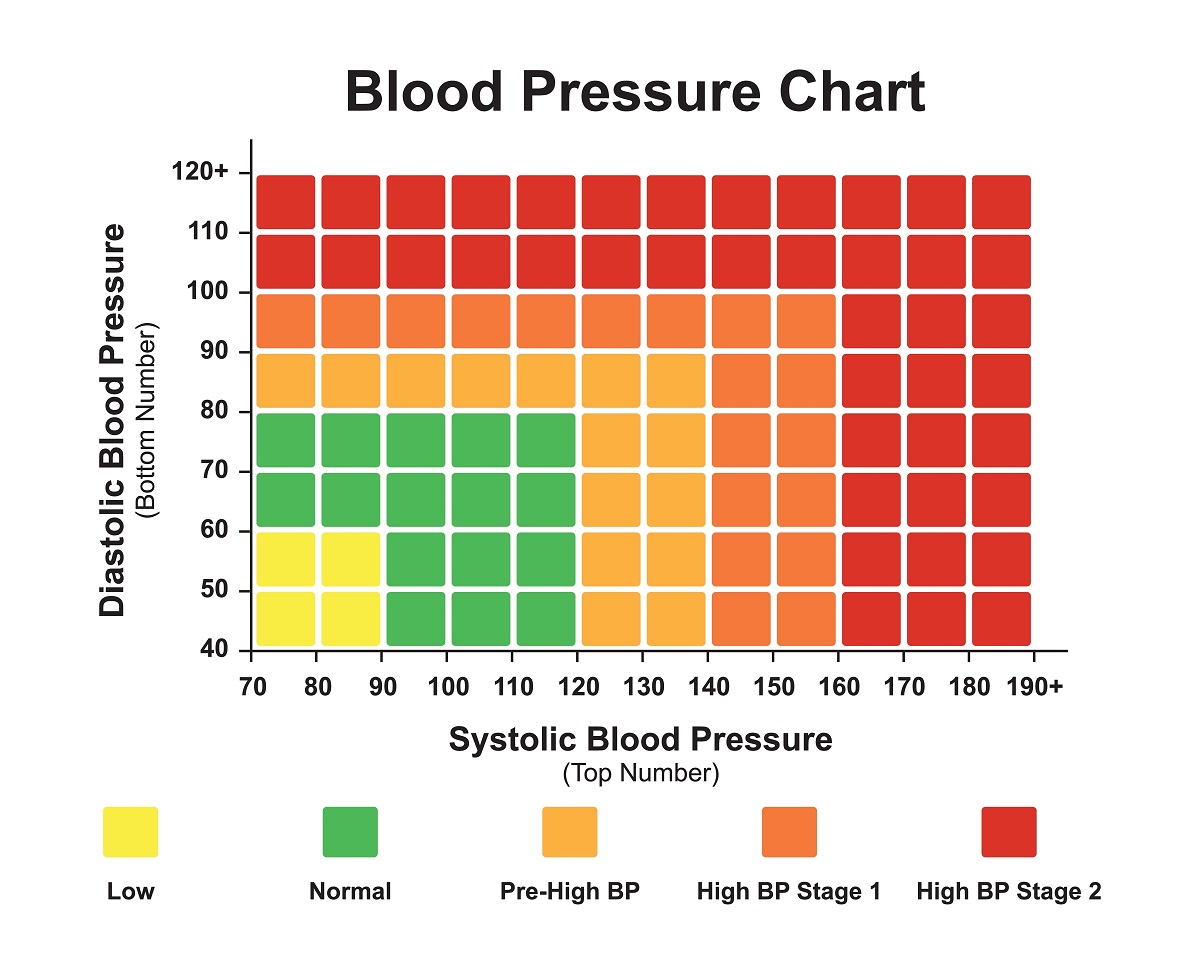J
Jason Hitch
Blood pressure is the force of the blood circulating against the walls of one's arteries as the heart pumps blood throughout the body. Blood pressure fluctuates throughout the day depending on the needs of your body. Sleep, exercise, breathing, the position of your body and emotional state can all have an affect on your blood pressure.The measurement of blood pressure can be useful in medical diagnostics and examining the health of an individual.
By measuring blood pressure, we can get an idea about how hard the heart is working. Normal blood pressure ensures all the vital parts of the body such as the heart, brain and kidneys are receiving nutrients and oxygen.If blood pressure remains high over time, it can put extra strain on the heart muscle. If blood pressure drops too low, it can mean your vital organs may not be getting enough oxygen.Blood pressure monitoring can give an insight into the heart health and overall health of an individual, and help identify risk factors associated with heart disease and other health conditions.
There's no ideal blood pressure number that suits everyone. What is considered a healthy range can differ depending on other factors related to your health.When blood pressure numbers are given, there are two numbers mentioned. The first number is the systolic pressure, which relates to the blood pressure in the arteries as the heart beats. The diastolic pressure is given as the second number, which is the pressure in the arteries as the heart is relaxed between beats. Both systolic and diastolic blood pressure are measured in units called millimetres of mercury (mmHg).As a general guide, optimal blood pressure may be less than 120/80. A normal range is generally considered 120-129/80-84. A high normal range may be 130-139/85-89. A high blood pressure reading may be greater than 140/90.

Hypertension is the name given to persistently high blood pressure (generally a blood pressure measurement of 140/90 or higher).
Often, people with high blood pressure don't experience any symptoms. Sometimes the only way to know you have high blood pressure is to have your blood pressure measured. Occasionally, some people with very high blood pressure may experience dizziness, headaches, blurred vision and chest pain.
High blood pressure over time increases the risk of health problems such as heart attack, stroke, cardiovascular disease, heart failure and kidney disease.
There are risk factors associated with high blood pressure and related health problems, some of which can be managed with lifestyle changes.Risk factors which can cause elevated blood pressure and increase your chance of heart disease and other heart related health conditions include:
Lack of physical activity
Smoking
Being overweight or obese
Poor diet
Consumption of alcohol
High cholesterol
Family history of premature heart disease
Age
There are some things that can help lower blood pressure:
Maintain a healthy weight. Being overweight puts you at an increased risk of hypertension
Regular physical activity
Follow a healthy diet
Aim for quality sleep
Work to reduce stress
Quit smoking
Reduce alcohol consumption
Blood pressure medication under the guidance of your doctor

Low blood pressure (hypotension) occurs when the pressure of blood circulating through the body is lower than normal. Low blood pressure is generally only a problem if it has a negative effect on the body. In that case, it may lead to vital organs, such as the brain, not receiving enough oxygen.
Symptoms of low blood pressure may include:
Dizziness
Weakness
Light-headedness when standing from sitting or lying
Unsteadiness
Fatigue
Unconsciousness if hypotension comes on suddenly
Potential causes of low blood pressure can include:
Emotional stress
Dehydration
Internal bleeding
Certain blood pressure medications
Pregnancy
Heart disease which can weaken the pumping of the heart
Blood loss
Dehydration can cause both hypertension or hypotension.Dehydration leads the blood vessels to constrict, which can increase the blood pressure. On the other hand, acute dehydration can cause a decrease in blood volume, ultimately leading to low blood pressure.
Learning how to properly measure blood pressure using a blood pressure monitor is important for diagnostics and ensuring an accurate blood pressure chart reading.Ensure you are using an accurate and reliable blood pressure monitor, such as an Omron heartsure blood pressure monitor. Follow the instructions that come with the monitor, as there may be differences in use based on the model.A general guide for how to use a blood pressure monitor:
Avoid exercising, eating, smoking or drinking caffeine within half an hour of taking your blood pressure, as they can temporarily increase your heart rate and blood pressure.
Rest for five minutes before taking your reading.
Ensure your arm is at the same level as your heart.
Place the blood pressure cuff around your upper arm, around 2cm above your elbow.
Keep still while the reading is taken.
Take two or three blood pressure readings within a few minutes of each other. This will allow you to rule out any outliers and find an average reading.
Keep a record of your blood pressure readings. Some monitors, such as the Microlife B2 blood pressure monitor allow you to record the readings within the monitor itself.

Regularly checking your blood pressure is a good way to keep an eye on your health. Those at higher risk of heart disease should get their blood pressure checked every 12 months at least.Places you can get your blood pressure checked:
Doctor check-ups
Healthcare facilities
Pharmacy
At home with a high quality accurate blood pressure monitor
Heart disease is a silent killer, and regular blood pressure monitoring can help you keep on top of your heart health.Here at LFA First Response we supply high quality and reliable blood pressure monitors and equipment, including the Microlife blood pressure monitor soft cuff in various sizes.Get in touch today to see how we can help support the heart health of you, your family and your patients.

In medical emergencies, particularly those involving sudden cardiac arrest (SCA), having immediate access to a defibrillator can mean the difference between life and death. Defibrillators are life-saving devices designed to restore a regular heart rhythm by delivering an electric shock to the heart.
J
Jason Hitch

Mining is a vital industry that powers economies around the globe, and Australia plays a significant role in it, being one of the largest producers of valuable resources like coal, iron ore, and gold.
J
Jason Hitch

Australia is home to some of the world's most venomous snakes, and for those exploring the bush, encountering one is a real possibility. While the chances of a snake bite may be low, knowing how to respond can mean the difference between life and death.
J
Jason Hitch

Daffodil Day, celebrated annually on the 22nd of August, is more than just a date on the calendar; it’s a symbol of hope and resilience for those affected by cancer. Understanding the impact of cancer in Australia, the significance of Daffodil Day, and how you can support those affected by cancer.
J
Jason Hitch